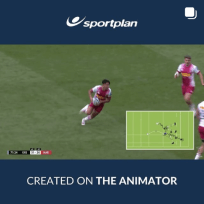Split your players into two teams, giving one group of players a set of coloured bibs to set them apart, and quickly tell your players the following laws:
Pick a couple of coaching points that are important to the session you are warming-up in preparation for.

in more ways than one




in more ways than one




2026 brings revolutionary changes to international rugby: a brand new global tournament, historic tours, and law changes that will reshape the game. Here's everything coaches need to know.

The 2025 Women's Rugby World Cup featured a record 32% female coaches - more than double 2021 figures. Here's what this growth means for the sport.

Matches are won by the team that makes better decisions under pressure. Learn how to develop game intelligence and manage critical moments.